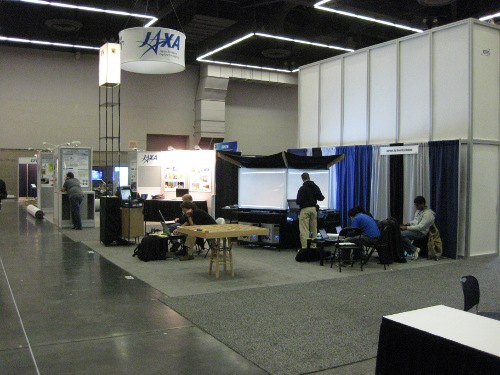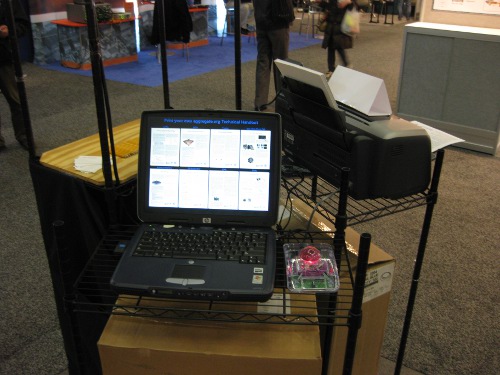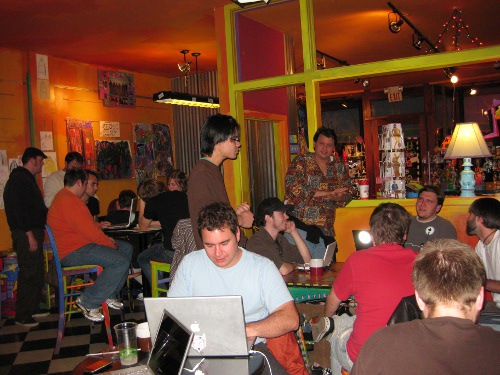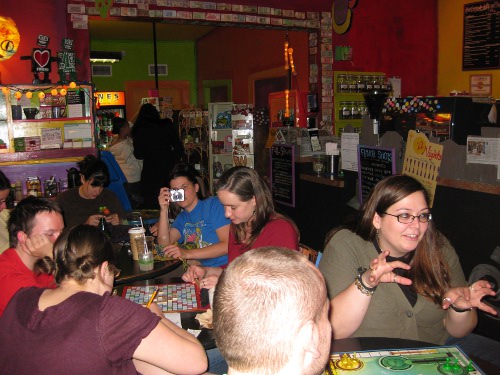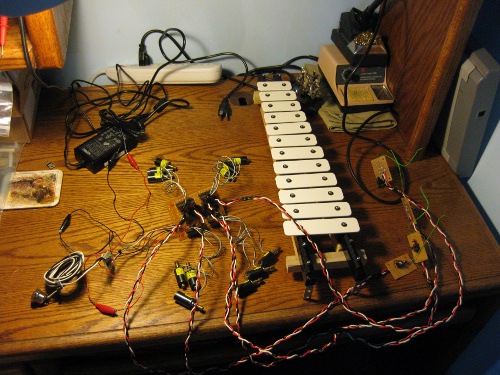I recently finished Cory Doctrow’s new novel, Makers, which I really didn’t have time to read, but between geek book club and starting it on the plane to portland I was compelled. Like his last novel, Little Brother (which is YA fiction, but everyone should read anyway), I read it as an eBook on my n810, which is a bit of an odd reading experience, but one that is growing on me (No additional mass/volume per book! Searchable! Ever-Present! Until the damn battery runs out or it breaks!)
It is a pretty fun read, but I must say I liked the first two “lighter” sections better than the third. Some observations:
* Kettlewell seems to be largely borrowed, without the transparently symbolic name, from Willam Gibson’s character Hubertus Bigend
* Suzanne Church strikes me as a sort of composite of the notable female Internet-People, particularly Ana Marie Cox but Xeni Jardin also come to mind. I also wonder if the name isn’t a slight homage to Susan Kare, who is responsible for a starting portion of the art for early iconic computer interface elements (this is a stretch, but only a little). A little googling shows there is also a fairly appropriate real Suzanne Church, which must be a little confusing right now.
* The tech in the story is not embarrassingly wrong; its all plausible and sound except for some fanciful detours near the end. This does not normally happen when engineers read fiction, so good job Cory.
* Cory has clever ideas to try, and the hackers are damn well going to implement them. I suspect many of the things that seem clever in the book (RFID tagging all your crap to make it searchable, for example) won’t actually pan out if implemented, but I’m onboard with other things, especially the mechanical-computers-as-art hobby one of the main characters engages in.
Overall, a fun light read, worth the couple hours it takes to get through. Surprisingly, I think someone who isn’t well-versed in the workings of electronics could read the whole thing without missing much, which is remarkable considering how much fun can be had by those of us who are by working out the minutia of how the nifty plot device gadgets would actually work.

